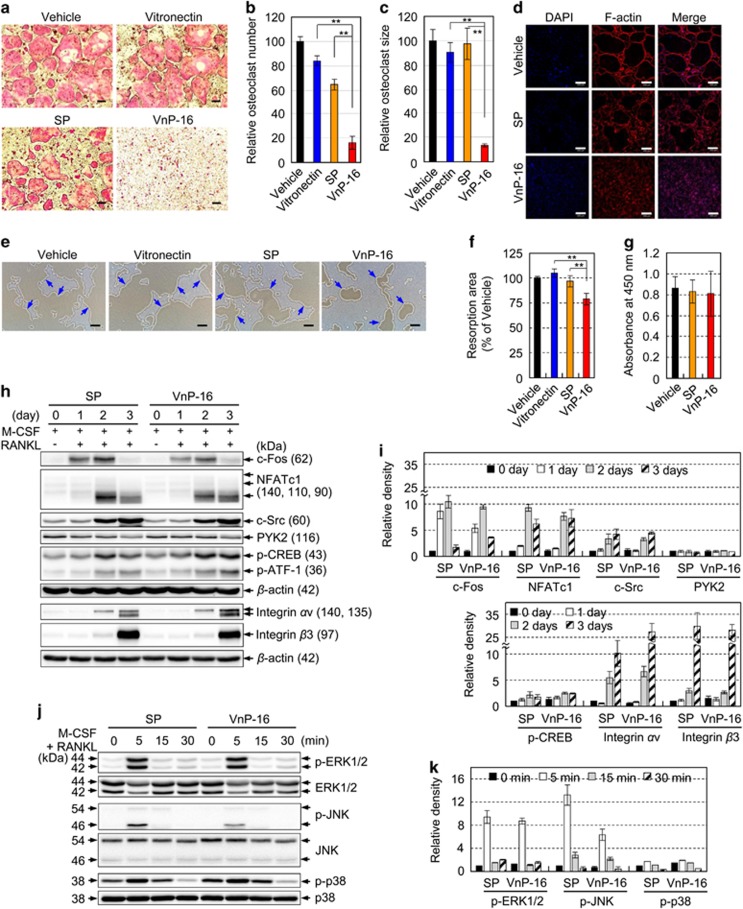Figure 6.
The effects of VnP-16 on M-CSF- and RANKL-induced osteoclast formation, F-actin-mediated cytoskeletal organization, resorptive activity, and the expression levels of osteoclastogenesis-related genes. (a–d) BMMs were cultured for 6 days on plates that were precoated with vehicle (DMSO), vitronectin (0.23 μg/cm2), SP (9.1 μg/cm2), or VnP-16 (9.1 μg/cm2), in the presence of 30 ng/ml M-CSF and 100 ng/ml RANKL. The induced cells were stained for TRAP (a) and immunostained with DAPI (blue) and rhodamine-phalloidin (F-actin, red) (d). TRAP-positive multinucleated cells containing three or more nuclei were counted as osteoclasts (b). The sizes of the osteoclasts were obtained by measuring the diameters of multinucleated TRAP-positive cells on × 40 photomicrographs (c). Scale bars, 200 μm. (e and f) The effects of VnP-16 on the bone resorbing activity of osteoclasts. BMMs were cultured for 6 days on Osteo Assay Surface plates that were coated with vehicle (DMSO), vitronectin (0.23 μg/cm2), or synthetic peptide (9.1 μg/cm2), in the presence of 30 ng/ml M-CSF and 100 ng/ml RANKL. The cells were removed and the resorbed pits were photographed (e). The blue arrows indicate the resorption pits formed by osteoclasts. Bone resorption was assessed by pit area measurements (f). Scale bars, 200 μm. (g) The effect of the concentration of VnP-16 (9.1 μg/cm2) that blocked osteoclast formation on the proliferation and viability of BMMs. (h and i) Immunoblotting (h) and densitometric analyses (i) of the osteoclastogenesis-related proteins in BMMs that were cultured for 1–3 days on plates precoated with SP or VnP-16 (9.1 μg/cm2), in the presence of 30 ng/ml M-CSF and 100 ng/ml RANKL. CREB, cAMP-response element-binding protein; ATF-1, activating transcription factor 1. (j,k) Immunoblotting (j) and densitometric analyses (k) of MAPKs in BMMs that were cultured for 3 days on plates precoated with SP or VnP-16 (9.1 μg/cm2), in the presence of 30 ng/ml M-CSF and 100 ng/ml RANKL, serum-starved for 3 h, and stimulated with M-CSF (30 ng/ml) and RANKL (100 ng/ml) for the indicated times. ERK, extracellular signal-regulated kinase. Data in (b,c,f and g) (n=4), and (i and k) (n=3) represent the mean±SD. **P<0.01

